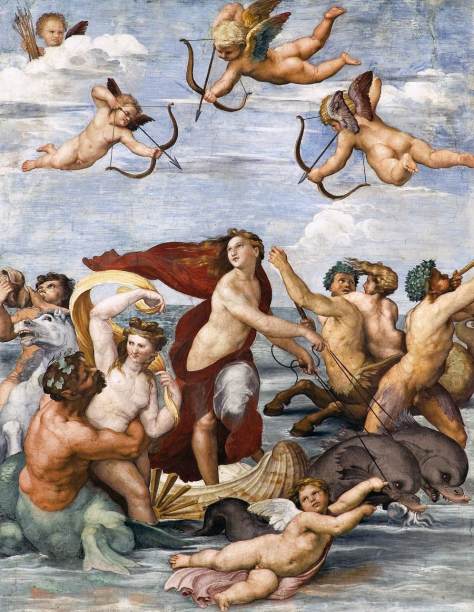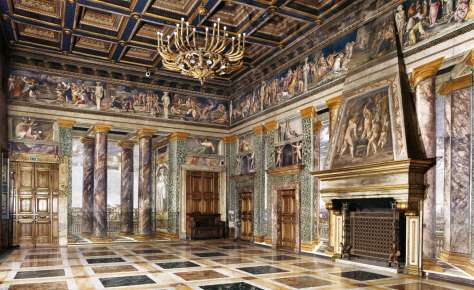Welcome to the luxurious villa of Agostino Chigi, richest man in Rome. Chigi lived from 1466 to 1520, born with a good inheritance and name but destined to monopolise huge amounts of mercantile ventures throughout Europe, ending up with perhaps 20,000 people in his employ. His success was guaranteed by a close relationship with the warrior pope, Julius II, whom Chigi even accompanied into battle (a banker and a pope mounting the attack..!). But Chigi, although himself not a man of great education, was a serious show-off when it came to art and culture.
He patronised the man you see above, whose looks shouldn’t fool you into thinking he was the grandfatherly type. An illegitimate bisexual wit, Pietro Aretino was a notorious writer (perhaps he’s a kind of Italian equivalent of the English John Wilmot – author of Signior Dildo, etc). Pietro Aretino satirised half the men in Italy and half the intellectual pursuits too, dabbling in pornographic writing and working in the coterie of our flush friend Agostino Chigi.
Of course, Chigi wanted visual spectacle too. Hence he patronised that pinnacle of High Renaissance elegance, Raffaello Sanzio da Urbino (or to the English, Rapahel). In the astonishing villa that Agostino Chigi had built, several artists adorned Chigi’s surroundings with frescoes. Raphael’s are the most famous and the ‘Galatea’ above was commissioned for Chigi’s illustrious Venetian mistress. Charged with movement, grace and eroticism, you can see why.
But perhaps my favourite instance of Agostino Chigi’s conspicuous consumption (although admittedly nowhere near the finest achievement of his spending) is his feasting. He would prove just how little lavish spending meant to him by throwing outrageous feasts and then having the expensive silverwear thrown away afterwards. Of course, servants would quickly go catch and collect it again in secret. Even a rich man doesn’t want to throw away something of value.



